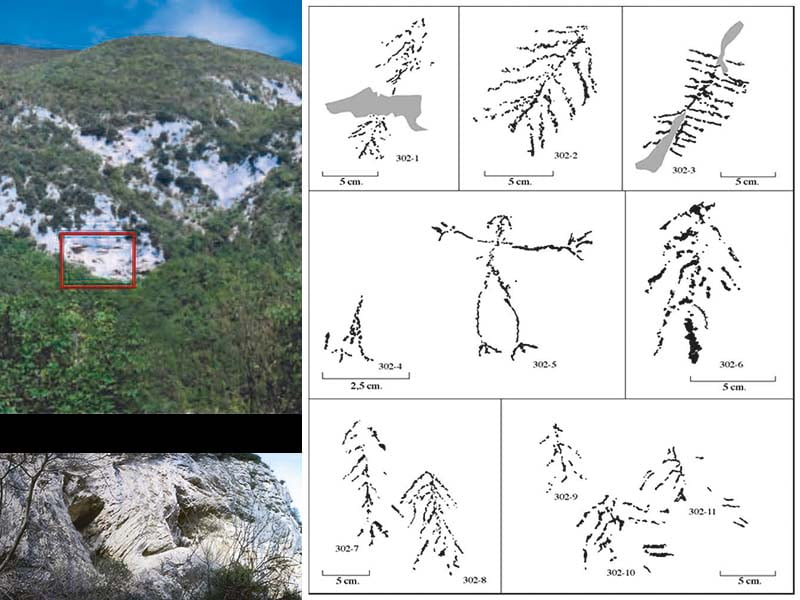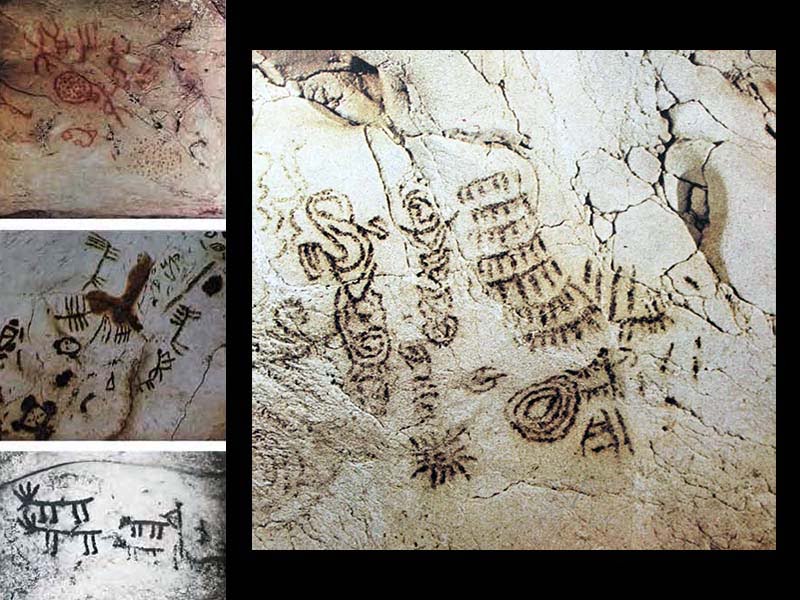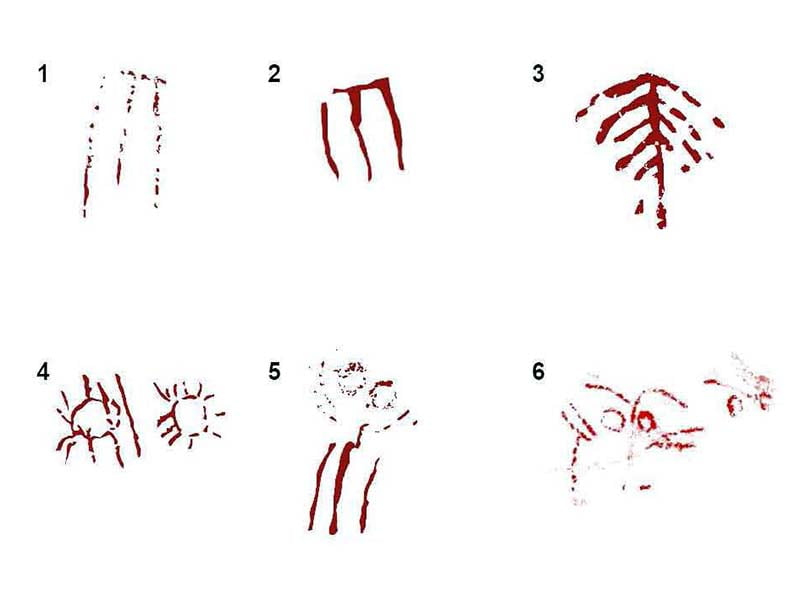The testimonies of historical attendance of the shelter are completely absent. Inside, eleven black paintings have been identified, spaced apart. There are tree- and branch-shaped motifs and two schematic anthropomorphic motifs, one of which is incomplete and the other with a T-shaped face and feet shaped like the claws of a bird of prey. They appear to be attributable to the Copper Age. The prevailing representations are therefore those of schematic tree-like anthropomorphs, figures made up of a vertical (central) line to which much shorter segments are attached laterally, often tending downwards. In the case of this shelter, the short lines are present symmetrically on both sides.
From archaeological studies we know that in general this type of so-called arboriform motif, engraved or painted on various types of supports, finds numerous examples during a broad chronological span ranging from the final upper Paleolithic to more recent periods (Iron Age), and is attested also in various geographical areas, including Italy, from north to south (Piedmont, Belluno, Puglia,) southern France, the Iberian Peninsula, etc., probably demonstrating a shared symbolic meaning; as regards Italy, for example, we find it in deer cave of Porto Badisco (Lecce). As regards comparisons with the Iberian peninsula, such as, to name but a few, in the site of Pala de Cabras (province of Ourense, near Vigo), in that of Vega de Espinareda (province of León) and in general very common throughout the peninsula, where they have been interpreted in the likeness of some cereal plants (Santos-Estevez, Tejerizo-García, Alonso Toucido, 2020).
As regards the realization of the paintings, scholars have highlighted that those in black are mostly characterized by discontinuous stretches, where the interruptions correspond to the very small concavities of the rock surface; this characteristic is probably the consequence of the rubbing of a black coloring substance, perhaps a piece of charred wood, on a rough surface; however in Umbria some black paintings and all the red paintings present a more accurate execution with a uniform colour, probably obtained with a fluid consistency dye spread with a brush. In general, it can be said that these representations are common to the whole territory, particularly in the sites that are often found along transit or control points of the territories, on rock faces or in small shelters that are difficult to access but located in positions overlooking of transit or mountain passes, with recurring symbols present in vast areas throughout Europe. Furthermore, in the specific case of Umbria, the references to the presence of dripping water are important, such as al Shelter of Pale, in which the anthropomorphic figures are obtained and covered by concretions to be related to the cults of dripping waters and galactophores. The relationship with the waters is part of the cultic complex spread from very ancient times up to the present day, but developed above all in the Neolithic and then widely spread in the Bronze Age, with offerings to the dripping waters or those of lakes and streams, both in caves and outdoors, and also at thermal waters and geothermal events.



Historical notes
From a territorial and morphological point of view, these localities have some characteristics common to the rest of the sites identified so far in central Italy, characteristics in which some common factors in the choice of places can perhaps be highlighted. In fact, the sites are found in mountainous areas of the internal Apennines, and usually near the confluence between small valleys and important river courses (Nera River, Menotre, etc); the incisions depicted were mostly made along the back wall of the rock shelters which have dimensions between 20-30 m, and are oriented according to the position of sunrise and sunset and are located in inaccessible places with difficult access . Water is present, whether in the form of dripping, small springs or outcrops, and it can be hypothesized that it was one of the reasons, even symbolic, for the choice of places.
CARD
LATEST PUBLISHED TEXTS
VISIT THE FACTSHEETS BY OBJECT

